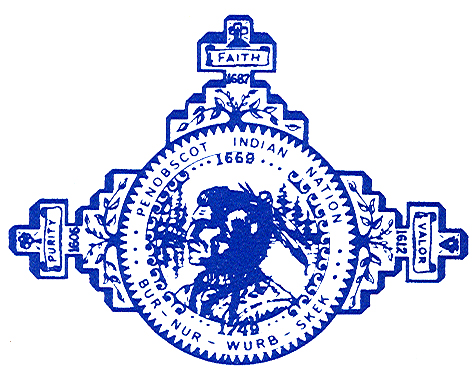![]()
Navigating Ancient Pathways: A Review of the Penobscot River Traditional Canoe Routes
For the discerning traveler seeking more than just scenic vistas, but a profound connection to history, culture, and untamed wilderness, the traditional canoe routes of the Penobscot Nation offer an unparalleled journey. This isn’t just about paddling; it’s about tracing the living maps etched into the landscape for millennia by the Wabanaki people. My review focuses on the immersive experience of exploring the Penobscot River watershed, a sprawling network of waterways that served as the very arteries of life, trade, and culture for the Penobscot Nation, and continues to flow with their enduring spirit.
The Penobscot Watershed: A Living Map, Not Just a River
The "location" here isn’t a single point on a GPS; it’s the entire Penobscot River watershed – a vast, intricate system of rivers, lakes, streams, and portage trails that stretches across a significant portion of what is now known as Maine. For the Penobscot Nation, this wasn’t merely a collection of waterways; it was their homeland, their highway, their grocery store, and their spiritual landscape. Their traditional canoe routes maps weren’t static paper documents but an intimate, inherited knowledge passed down through generations – an understanding of every current, every rapids, every portage, every seasonal resource.

To paddle these waters today is to step onto that living map. It’s to understand how the flow of the river dictated movement, how the changing seasons brought different opportunities, and how every bend and island held significance. The Penobscot River itself, from its source high in the North Woods to its tidal embrace with the Atlantic, is the central artery, but it’s the tributaries – the West Branch, the East Branch, the Piscataquis, and countless smaller streams and lakes – that form the complex web of traditional travel. This profound understanding of the land as a navigational and cultural blueprint is what elevates the experience beyond mere recreation.
Choosing Your Journey: Sections and Spirit
The Penobscot watershed is immense, offering diverse experiences for paddlers of varying skill levels. For those seeking true wilderness and a deep dive into the historical routes, the West Branch of the Penobscot stands out. This section, particularly from Chesuncook Lake down towards the Medway area, is renowned for its blend of challenging whitewater (like the iconic Ripogenus Gorge, often portaged by recreational paddlers, but historically navigated with skill), serene flatwater, and abundant wildlife. It’s here that the traditional routes intertwined with logging history, creating a unique juxtaposition of ancient pathways and industrial heritage.
Alternatively, for a more accessible yet equally meaningful experience, sections of the mainstem Penobscot River closer to Old Town (Panawahpskek), the Penobscot Nation’s reservation, offer a different kind of connection. While perhaps less "wild" in parts, paddling these waters brings you closer to the contemporary heart of the Penobscot Nation. It allows for a tangible understanding of how the river continues to shape their lives and culture, and often provides opportunities for cultural education through local organizations or guided tours that emphasize Penobscot perspectives.

My own journey focused on a multi-day expedition along a segment of the West Branch, aiming to immerse myself in the spirit of these ancestral routes. We launched from a quiet access point below a major dam, immediately enveloped by towering pines and the crisp scent of the Maine woods. The choice of route involved careful planning, not just for physical challenge, but for understanding the historical context of each segment – where traditional camps might have been, where resources were gathered, and how the river’s character changed with each mile.
The Experience on the Water: Paddling Through Time
The sensation of dipping a paddle into the dark, cool waters of the Penobscot is immediately grounding. The modern world recedes, replaced by the rhythmic swish of water against the canoe and the sounds of the forest. Eagles soared overhead, their calls echoing across the water, a constant reminder of the enduring wildness of this place. Moose were spotted grazing in marshy coves, their immense forms appearing almost ethereal in the early morning mist. Loons, with their haunting calls, became the soundtrack to our evenings, their sleek forms diving and resurfacing with silent grace.
Paddling these routes is a lesson in observation. The subtle changes in current, the tell-tale ripples of an upcoming eddy, the nuances of the shoreline – these are the details that would have been vital for Penobscot navigators. We learned to read the river, not just as a physical entity, but as a dynamic, living map that constantly offers information. The portage trails, often worn smooth by countless footsteps over centuries, became tangible links to the past. Hauling our canoe and gear, we gained a newfound appreciation for the sheer physical effort and ingenuity required by those who traversed these lands long before modern infrastructure. It wasn’t just about moving from point A to B; it was about moving with the land, respecting its contours and challenges.

The campsites along the river, often simple clearings with fire rings, invited contemplation. Sitting by the fire under a canopy of stars, far from light pollution, the silence was profound, broken only by the crackle of the flames and the hoot of an owl. It was in these moments that the past felt most present. Imagining generations of Penobscot families making camp on these very spots, sharing stories, preparing food, and connecting with the land, created a powerful sense of continuity and reverence. The water, the trees, the rocks – they felt like witnesses to an unbroken chain of human experience.
Beyond the Paddle: Cultural Immersion and Reflection
To truly review this "location," one must acknowledge that the experience extends far beyond the physical act of paddling. It demands a commitment to understanding and respecting the Penobscot Nation’s deep cultural heritage. Before and after our trip, we made it a point to engage with available resources: visiting the Penobscot Nation Museum on Indian Island, reading historical accounts from Penobscot perspectives, and seeking out educational materials. This cultural preparation is not optional; it’s integral to appreciating the profound significance of these routes.
The journey taught us humility. We were visitors on ancient lands, traversing pathways imbued with millennia of history. It reinforced the importance of "Leave No Trace" principles, not just as a guideline, but as an act of respect for the land and its traditional stewards. Every piece of litter, every scuff mark, felt like a desecration of a sacred space. The silence of the wilderness wasn’t empty; it was filled with stories, with the echoes of ancient voices, and with the ongoing presence of the Penobscot people.
This journey forced a re-evaluation of our relationship with the natural world. It wasn’t just "scenery"; it was a complex ecosystem, a source of life, and a repository of knowledge. The canoe became a conduit, not just for travel, but for understanding. It offered a unique vantage point from which to perceive the world, low to the water, moving with the current, in harmony with the natural rhythms.
Practicalities for the Modern Explorer

For those inspired to embark on their own journey along the Penobscot Nation’s traditional canoe routes, careful planning is essential.
- Gear: A reliable canoe (or kayak), paddles, PFDs, dry bags, camping equipment, and navigation tools (GPS and physical maps are crucial, as cell service is spotty).
- Safety: Understanding river currents, identifying hazards, knowing basic first aid, and being prepared for varying weather conditions are paramount. Self-sufficiency is key in remote areas.
- Best Seasons: Late spring (after high water subsides) and early fall offer pleasant temperatures, fewer insects, and stunning foliage. Summer can be warm, with more insects, but offers longer daylight hours.
- Permits & Regulations: Be aware of land ownership (private, public, tribal) and obtain any necessary permits for camping or access. Respect tribal sovereignty and regulations on Penobscot Nation lands.
- Guiding: For those less experienced or seeking deeper cultural insights, hiring a reputable guide, especially one with an understanding of Penobscot history and culture, can greatly enrich the experience. Some Penobscot Nation members offer guiding services, providing invaluable perspectives.
- Respect: Above all, approach this journey with a spirit of respect – for the land, for the wildlife, and for the enduring legacy of the Penobscot Nation.
Conclusion: A Journey of Discovery and Reverence
Reviewing the experience of exploring the Penobscot Nation’s traditional canoe routes maps is to review not just a physical location, but a profound connection to a living heritage. It is an extraordinary blend of adventure, natural beauty, and deep cultural immersion. Paddling these ancient waterways offers a unique opportunity to slow down, to listen, and to learn from the land itself, guided by the wisdom of those who have navigated it for countless generations.
This journey is a powerful reminder that some of the most profound "maps" are not drawn on paper, but are carried in the hearts and minds of indigenous peoples, inscribed onto the landscape itself through millennia of intimate relationship. To paddle the Penobscot is to embark on a pilgrimage, a chance to connect with an enduring legacy, and to emerge with a renewed sense of wonder, respect, and responsibility for the world around us. It is an experience that transcends mere travel; it is a journey into the soul of a nation and the heart of a wilderness.
